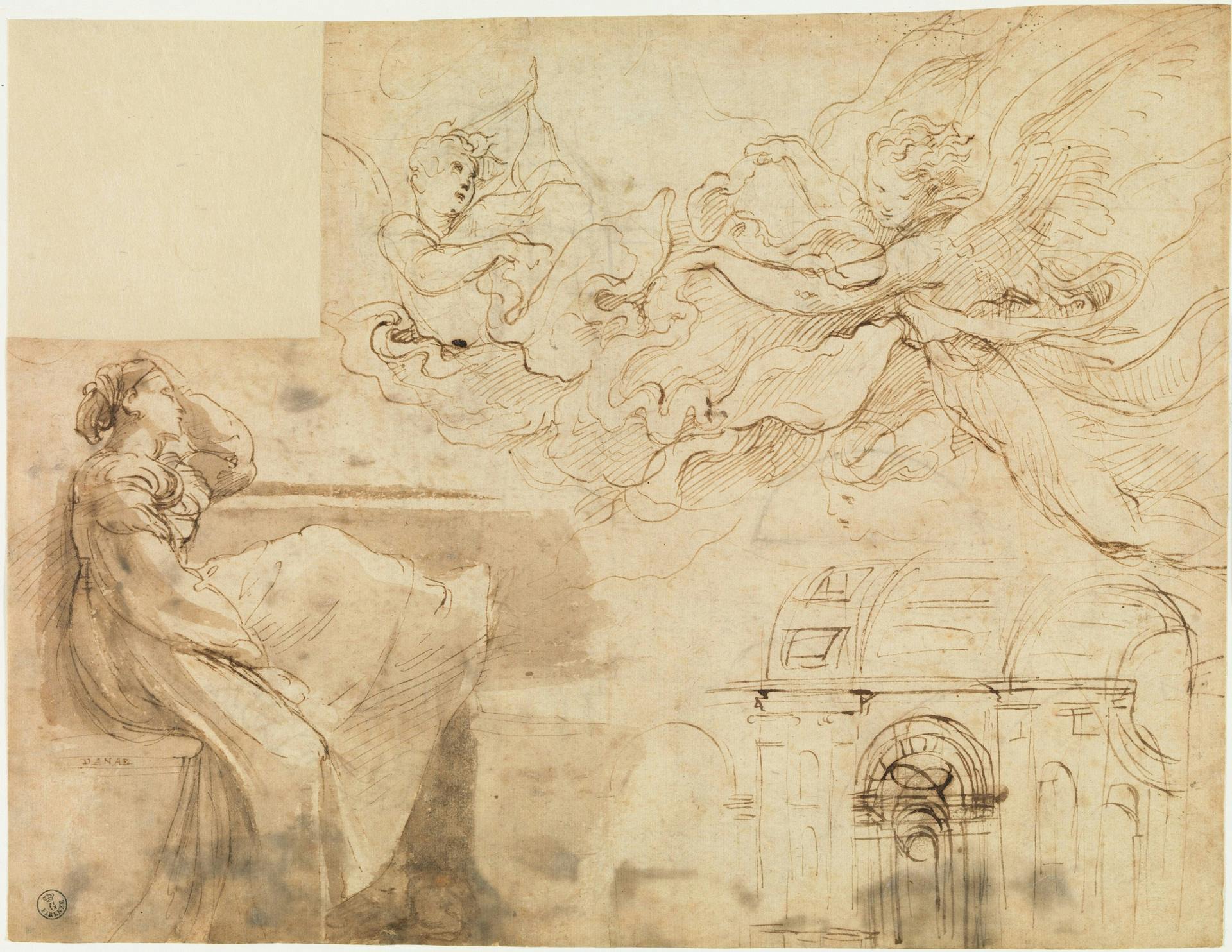Young woman seated on the parapet of a window and other studies of figures and architecture
Raffaello Sanzio (Urbino 1483 – Rome 1520)
Bottom left, in pan, old handwriting “DANAE”
The sheet is a series of forms, reports and values set out on different interpretation levels. An initial level, iconographic in nature, focuses above all on the charming female figure, seated and leaning on a kind of parapet. This is accompanied by a study of angels for the fresco with God Appears to Noah in the vault of the Stanza di Eliodoro in the Vatican, together with architectural sketches. These latter sketches, studied together with the otheron the right side have been attributed to the studies that Raphael was carrying out in Rome, since taking charge of building St Peter's (1 April 1514).
The figure of the young woman is mainly inspired by the relief of an ancient sarcophagus, once in the Albani del Drago collection in Rome and now in the National Roman Museum in Palazzo Altemps, which a traditional but incorrect interpretation identified as a Nova nupta, a girl in the process of being dressed for her wedding. The indication proposed by the writing “DANAE”, added in ink on the front margin of the seat, suggests that for Raphael, the relief may have been interpreted as the myth of Danae; the heroine would therefore be resting on the parapet of the window inside the tower where she had been shut away by her father Acrisius, to avoid the peril of being killed by Danae’s future son. It is an original interpretation and in line with mediaeval iconography. In the Middle Ages, Danae, as a figure of virginal conception, was likened to the Virgin Mary and the incarnation of the Word. Raphael wanted to emphasize her innocence in the conception of Perseus, showing her as completely dressed and totally free of the erotic connotations of the figures later portrayed by Correggio and Titian.
Raphael was therefore able to give an ancient aura to an image still modelled on mediaeval morals and therefore, contextualising her in a seemingly domestic setting, where both the form of the chair and the style of her clothing reflect his own period.
The Florentine drawing would seem to refer to the three major arts at the same time, sculpture, obscured by the interpretation of the ancient relief: painting, represented by the preparatory studies for the Stanza di Eliodoro and architecture, presented in the ideas for St Peter’s. Sculpture, painting, and architecture are then brought together in drawing, perfectly able to reproduce the sculpted relief in ink wash, the mainly two-dimensionality of the fresco, with its fluid line and diagonal strokes; the volumes of the building, rapidly marked out with concision in the sketch on the right.
